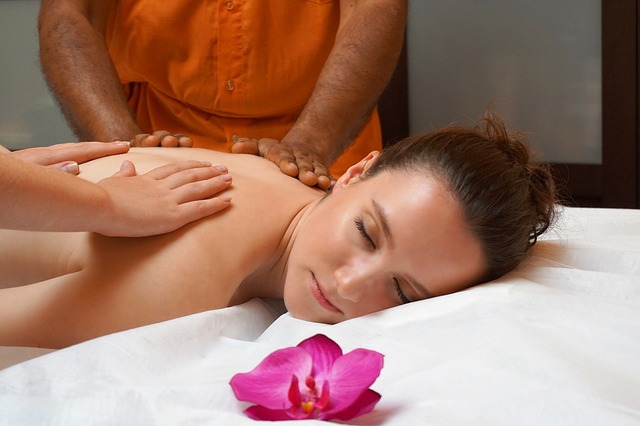In Hawaiian or lomi lomi massage, practitioners use the palms, forearms, fingers, knuckles, elbows, knees, feet, even sticks and stones. Lomi lomi practices varied by family, ahupuaʻa (traditional region) and island.
Traditionally in ancient Hawaii lomi lomi was practiced in four contexts:
1. As a healing practice of native healers — kahuna lāʻau lapaʻau (healers) and kahuna hāhā (diagnosticians)
2. As a luxury and an aid to digestion, especially by the ruling chiefs (aliʻi)
3. As restorative massage within the family
4. By ʻōlohe lua (masters of the Hawaiian martial arts)
Although the term kahuna lomilomi is widely used in contemporary writings, traditionally the people who performed lomilomi were called ka poʻe lomilomi (the massage people) or kanaka lomi (massage person).
A related term, kauka lomilomi, was coined in 1920 to describe osteopathic physicians. The word kauka is the Hawaiianized version of doctor.
Like all endeavors in old Hawaii, lomilomi was conducted with prayer and intention. Hawaiian kupuna (elder) Auntie Margaret Machado describes lomilomi as “praying” work.
Emma Akana Olmstead, a kupuna of Hana, Maui, in the 1930s, said, “When a treatment is to be given, the one who gives the treatment first plucks the herbs to be used. He prays as he picks the herbs.
No one should call him back or distract his attention, all should be as still as possible for they do not want the vibration broken.
They knew the laws of vibration. They knew the power of the spoken word. They knew Nature. They gathered the vibration of the plentiful.”
History Of Lomi Lomi
The early Polynesian settlers brought their own form of massage and, like a canoe plant, it evolved to become something uniquely Hawaiian.
It was practiced by everyone, from child to chief. As an indigenous practice that evolved over hundreds of years in isolated valleys throughout the island chain, there are many different “schools” of lomilomi with different approaches and techniques.
After American missionaries arrived in 1820 and converted many in the Kingdom of Hawaii to Christianity, traditional healing arts were scorned as heathen and primitive.
Various laws prohibited “heathen” worship and any related Native Hawaiian healing practices. Lomilomi as part of medical practice went underground.
But lomilomi as restorative massage remained popular not only among the Hawaiians, but among foreign residents and visitors as well.
Charles Wilkes describes it being offered after his ascent of Mokuaweoweo in 1841 on the United States Exploring Expedition.
American writer Charles Nordhoff wrote about his experience with lomi lomi massage in his 1875 book, Northern California, Oregon, and the Sandwich Islands.
For Robert Louis Stevenson it was “disagreeable”, but English adventurer Isabella Bird found it delightful. Not only did foreigners receive lomilomi, they also gave it.
According to the first Director of the Bishop Museum, writing in 1908, one of the most skilled practitioners was Sanford Dole, one of the leaders of the overthrow of the Kingdom.
Although the Legislature of the Kingdom of Hawaiʻi banned curing through “superstitious methods” in 1886, massage was not subject to legislation until 1945.
In 1947, the Board of Massage was established to regulate lomilomi and massage. The law required practitioners to pass a written test on anatomy, physiology and massage theory.
Many renowned native healers were unable or unwilling to pass the test, and thus lomilomi as restorative massage was forced underground.
In 2001, the Legislature passed Act 304, amending HRS section 453, allowing native practitioners to be certified by the Hawaiian medical board, Papa Ola Lōkahi, or by the various community health centers.
This law is controversial among some native practitioners, but those who are certified can provide lomilomi without fear of prosecution under Hawaii state law.
Lomi Lomi Today
Lomilomi is now a common and popular massage modality throughout the world, especially in Hawaii, Japan and Europe.
Many traditionally taught lomi lomi practitioners find it virtually impossible to offer authentic lomi lomi in a spa setting and are unwilling to work in most spas or massage offices. They prefer to treat selected clients quietly and privately, often in home settings.
Lomilomi practitioners may also ask their clients to pray, meditate, change their diets, and engage in other self-help activities usually believed to lie outside the scope of massage in an effort to truly help the clients obtain optimal health.
Some massage therapists may practice what they call lomilomi and incorporate techniques from other massage modalities during the session. While often pleasant, this style of massage is very different from authentic lomilomi.






